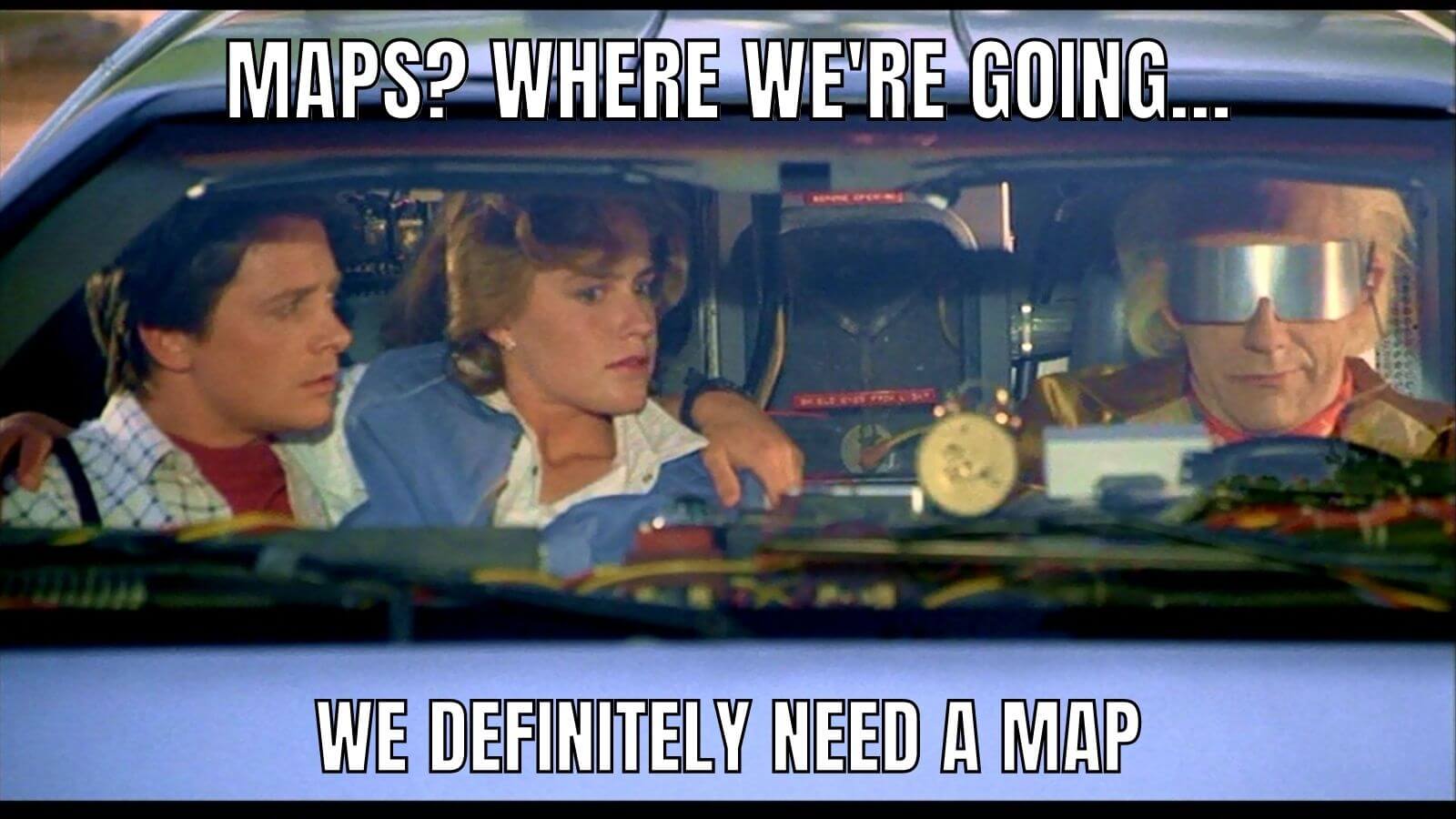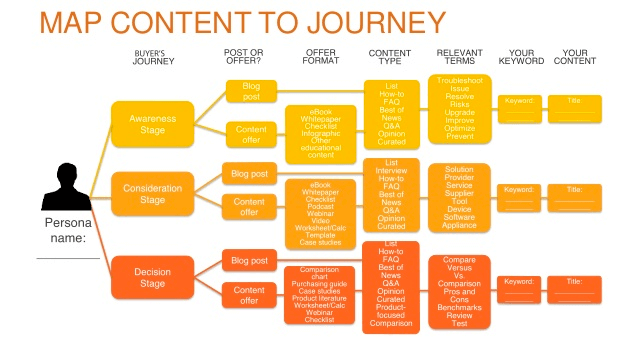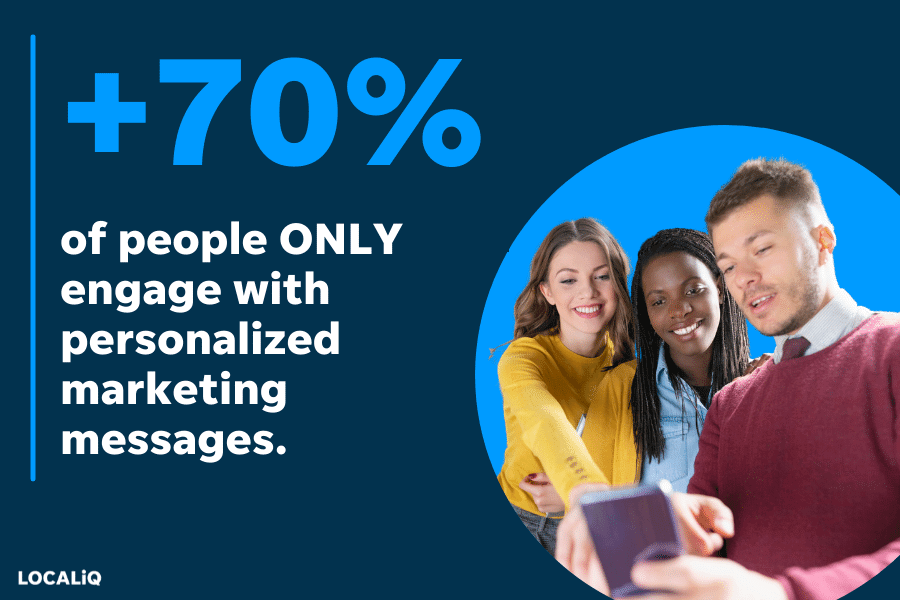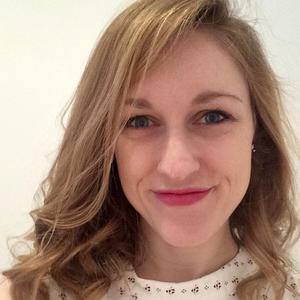Your content is most effective when it reaches your audience at the right time. That’s why you wouldn’t promote Black Friday content in December or share posts about February holidays in March. This is pretty straightforward because these dates are fixed for your entire audience—we’re either all in February or all in March. But that’s not the case when you consider the right time for a customer in their buyer’s journey. That’s where a content map comes in.

In this guide, we’ll cover everything you need to get started content mapping, including:
- What a content map is
- Why content mapping is important
- How to build (and use) a content map
Plus, we’re sharing a handy (free!) content map template to help you get started.
Let’s get going.
What is a content map?
A content map is a tool that aligns your brand’s content with the personas and their stage of the buyer’s journey. That means identifying, for example, which blog posts appeal to a persona’s consideration phase or which YouTube videos correspond to a different persona’s awareness phase.
A successful content map visualizes a persona’s “content journey,” the pieces of content that appeal to them through each stage of their buyer’s journey.

A very visual example of a content map from Felber PR & Marketing.
More importantly, though, a content map is a working document that your team can add to and adjust as you create more content and as your personas evolve. That way, content mapping can be a regular activity to improve your marketing rather than a static asset.
Why is content mapping important?
Content mapping is important because it ensures you’re delivering the right content to the right person at the right time. This is key to your marketing success for two reasons. The first is straightforward, and it’s the reason why personalization in marketing has become so common. When you’re offering a solution that a lead needs right at that moment, your offer is more compelling.
The second reason why reaching the right person at the right time is crucial is likely a result of the focus on personalization. People expect personalization in marketing—and, worse, they get annoyed when it’s not.

So if you’re not addressing your content to your buyer personas, you risk offering a bad experience with your brand. In fact, Salesforce found that 66% of customers expect companies to understand their needs and expectations. That means specific, personalized content for every stage of the buyer’s journey.
That’s why you need to use content mapping to make your content more targeted and make your marketing more effective.
How to build a content map for better marketing
Your leads and customers interact with your brand’s content everywhere from impressions on the search results pages to FAQs on your website, so taking the time to identify not only who your target audience is but also where they are in your sales funnel will make your content more specific and, ultimately, more compelling. Here’s how to use content mapping to make your marketing more effective at every stage of the funnel.
1. Start with your personas
The foundation of any content map will be your personas. These are comprehensive fictional people that represent your target audience because they align with your ideal customers. That means they’re great to have in mind when you’re creating content.

Here’s a great example from Business 2 Community.
If you don’t have these already, you’ll want to create buyer personas first. Here are some details that you’ll want to include in your personas:
- Demographics: This includes information like age, gender identification, location, socioeconomic status, or educational background.
- Job: This means job title and level, as well as the type and size of the company and the industry.
- Motivators: What does your persona care about? What helps them make decisions?
- Goals: What is your persona trying to accomplish?
- Pain Points: What is your persona annoyed by? What frustrates them or gets in the way of their goals, especially as it relates to your product or offering?
The best way to start creating your personas is to focus on customer data, including interviewing a variety of customers. This is a big project, but it’ll be worth it. Once you have your personas, you can use content mapping to make sure you’re reaching the right person with the right content at the right time.
2. Define your content marketing goals
Your content marketing should have clear goals—just like any other marketing activity. The Content Marketing Institute found that creating brand awareness, building credibility and trust, and educating your audience are among the most common goals for content marketing.

The good news? These clearly align with your funnel. Creating brand awareness for top-of-funnel leads, building credibility with the consideration stage, and educating your audience during the decision-making stage.
When you’re creating your content map, make sure you have a goal in mind for each stage of the funnel.
Related: Find out the top marketing goals and objectives.
3. Map out each persona’s content journey
Once you have your content marketing goals in mind, it’s time to map out each persona’s content journey. You know each persona’s motivations, goals, and pain points overall. But what are they looking for and interested at each stage of the buyer’s journey? How are they feeling at each stage of the journey? Considering how they’re feeling is a great exercise in empathy, which most customers expect of brands.
After determining what your personas are feeling and concerned with during each stage, consider what types of content they might be likely to consume. For instance, social media posts and infographics are more effective during the awareness stage, when the person has only just started exploring their problem. An in-depth case study, on the other hand, is more impactful during the decision-making stage.
4. Align your content with each stage
Now that you know what your persona needs at each stage, it’s time to align your content. Let’s consider an example from LOCALiQ.

This blog post has an excellent attention-grabbing headline and offers a ton of example email subject lines to use right away. This is great for an awareness stage—a busy marketer looking for email subject lines to use or spark some ideas would be the ideal reader.
Now, your method for aligning your content with each persona’s stage will depend on the size of your content program. For a company like HubSpot, for example, with multiple vertical-specific blogs, it would be a huge undertaking.

More than 5,000 indexed pages? That’s so many blog posts.
If your content program is smaller or newer, you might want to spend time putting every blog and video on a content map. But if you have lots to work through, it might not be worth your time aligning everything. If that’s the case, start with your top-performing content, whether it’s the most traffic, the most shares, or the most conversions. Something’s working there, so it should be on your content map.
5. Brainstorm based on your content map
Once you’ve matched your existing content to your personas and their stage in the buyer’s journey, you can get a better sense of what you’re missing. No content for a persona’s awareness stage? Start there. Missing a video option for a persona’s consideration stage? Create something for this, too.
The best way to get started filling these content gaps is to have a brainstorm for content ideas. Start with your persona, their concerns for the missing stage, and see what you come up with. Then, it’s time to get started.
6. Keep evolving your content map
This is the last way to use your content map to see better marketing results, but it might also be the most important. Once you’ve created your content map, you need to keep it up to date as you create more content, explore new content channels and types, add new products and offerings, and evolve your personas.
That’s why earlier we recommended using a working document for your content map. We find that a shared spreadsheet works well—it communicates information visually, it organizes your content and personas, and it’s easy to keep everyone on the same page when you make any updates with a shared document.
And in order to keep evolving your content map, you need to get started as soon as possible. That’s why we’re sharing our content map template that you can use now. Just make it a copy and start making it your own.

Get the content map template here.
Use your content map to convert more leads today
Content mapping might seem like an administrative step to skip or a documentation exercise you can rush through, but it can make your marketing efforts pay off. By targeting your content to a persona exactly when they need it, you’re personalizing your material and addressing your audience directly. Even more importantly, though, you’re establishing trust and credibility while highlighting your brand’s empathy for its customers. That’s huge.
So let’s recap.
Here’s how to build a content map to reach the right person with the right message at the right time:
- Start with your personas
- Define your content marketing goals
- Map out each persona’s content journey
- Align your content with each stage
- Brainstorm based on your content map
- Keep evolving your content map template
And, in case you missed it, here is a content map template to help get you started aligning your blogs, infographics, videos, and more to your personas. Good luck!
Related Articles
-

Content Marketing vs. Social Media Marketing: The Strategy Showdown
-

The Small Business Guide to AI Content Marketing: Tips, Tools & Precautions
-

What Is Direct Response Copywriting? (7 Best Practices + Examples)
-

50 Powerful Call-to-Action Phrases to Convert More Customers (with Examples)
-

22 Tried & True Content Marketing Ideas for Small Businesses

